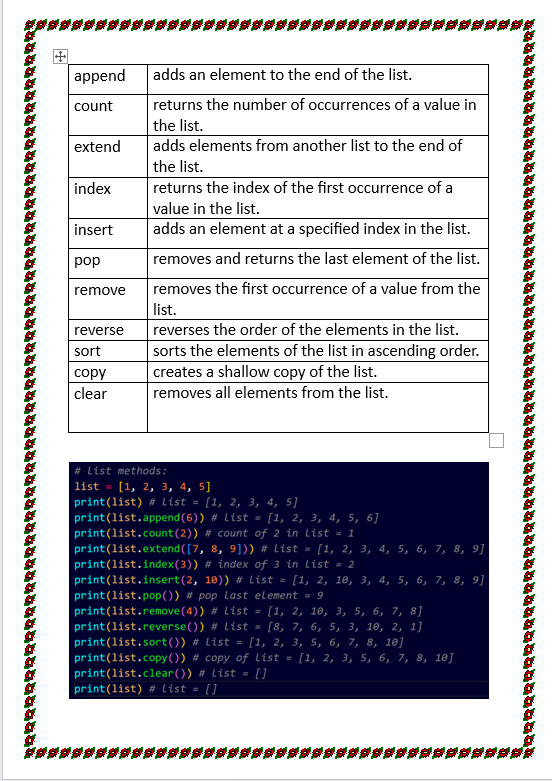Today I learned about list methods in Python! 🐍
Here’s a quick summary of some important methods and how they work:
🌟 Key Takeaway:
Python lists are very powerful and learning these methods makes handling data so much easier!
1."Did i miss any method?"
2."How do you use these in your daily projects?"
"Feel free to share your thoughts or additional methods in the comments below. Let's learn together!""




Top comments (2)
As a beginner when we start using lists for the first time, one of the problems we face is with indexing a list.
Like, for example:
-> we have a list
-> we have a while loop
-> inside that loop: we do some operations on the list using the above methods.
-> like we remove some elements in the middle.
-> then we think the length and indexes of the list are same as before.
-> we try to access the index of a deleted element
-> boom! we mess up!
-> or the loop depends on the list's length and we changed the length.
These are some errors I feel are important to come across earlier as a beginner!
You're absolutely right — this is a super common issue for beginners (and even experienced devs sometimes!). When you modify a list while looping over it, the indexes shift, and it can really mess things up.
Here are a few ways to avoid those problems:
below are the code
✅ 1: For loop using a copy of the list
my_list = [1, 2, 3, 4, 5] # CREATING LIST
for item in my_list[:]: # Start a for loop over a COPY of the list (not the original list)
if item == 3: # If the current item is 3
my_list.remove(item) # Remove 3 from the original list
print(my_list) # Print the list after removing 3
2: While loop with manual index control
my_list = [1, 2, 3, 4, 5] # CREATING LIST
i = 0 # Set the starting index to 0 (first element)
while i < len(my_list): # Loop as long as 'i' is smaller than the length of the list
if my_list[i] == 3: # If the item at index 'i' is 3
my_list.pop(i) # Remove the item at index 'i', Don't move to the next index because the list has shifted
else:
i += 1 # If no item was removed, move to the next index, INCREMENT i here
print(my_list) # Print the list after removing 3
⚠️ Tip to Remember:
''I hope this helps you!
If you want the code as a screenshot, I can send that to you too''